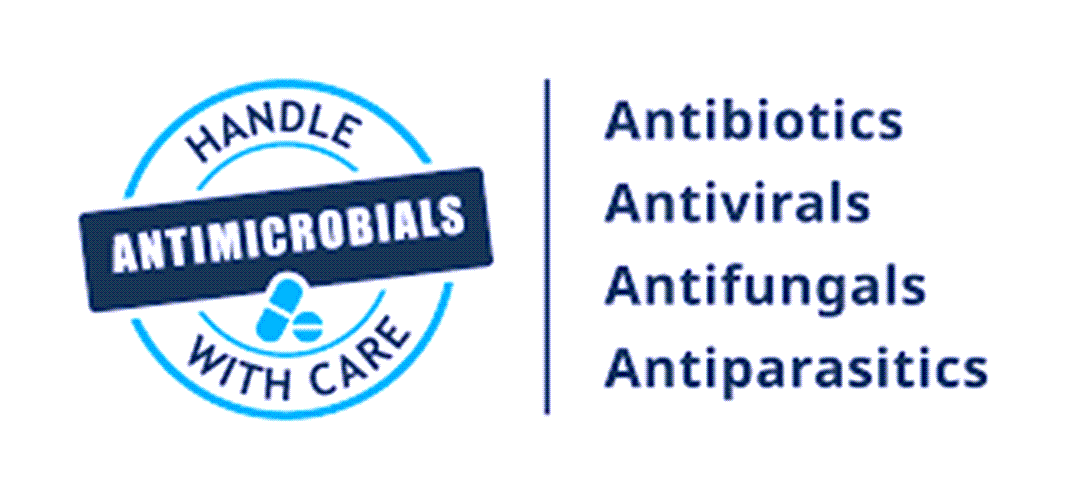World Antimicrobial Awareness Week and its Significance

Every year, World Antimicrobial Awareness Week (WAAW) is observed between 18 and 24 November. The objective of the campaign is to raise awareness about global antimicrobial resistance and to encourage health workers, policymakers, and the general public to adopt best practices to prevent the spread of drug-resistant organisms.
The Food and Agriculture Organization of the United Nations (FAO), the United Nations Environment Programme (UNEP), the World Health Organization (WHO), and the World Organisation for Animal Health (WOAH) celebrate it. The slogan of World Antimicrobial Awareness Week remains the same and it is ‘Antimicrobials: Handle with Care‘.
Theme of World Antimicrobial Awareness Week 2022
Every year, World Antimicrobial Awareness Week (WAAW) is observed between 18 and 24 November. The theme for World Antimicrobial Awareness Week 2022 is “Preventing antimicrobial resistance together” The theme of World Antimicrobial Awareness Week 2021 was “Spread Awareness, Stop Resistance”. The theme of World Antimicrobial Awareness Week 2020 was ” United to preserve antimicrobials”
What is antimicrobial resistance (AMR)
After researching mould’s antibiotic properties, Sir Fleming found that mould secretes an antibacterial substance, which he names “penicillin.” That leads to the discovery of antibiotics. Since their discovery, antibiotics have been the cornerstone of modern medicine. Antibiotics are overused and misused in human and animal health. This contributes to antibiotic resistance, which happens when microbes, like bacteria, become resistant to the drugs used to treat them.
Pfizer vaccine: what an ‘efficacy rate above 90%’ really means
Antimicrobial resistance (AMR) poses a threat to humans, animals, plants, and the environment. We are all affected by it. As a result, this year’s theme emphasizes the need for collaboration across sectors to ensure that these essential medicines remain effective. AMR must be addressed through a One Health approach since it is a truly global endeavour.
To effectively combat it, all sectors must work together and encourage the prudent use of antimicrobials, as well as preventive measures. It is imperative to improve infection prevention and control in health care facilities, farms, and food industry premises, ensure access to vaccines, clean water, sanitation, and hygiene, implement best practices in food and agriculture production, and manage waste and wastewater from relevant industries effectively in order to reduce the need for antimicrobials and minimize the emergence and transmission of antimicrobial resistance.
Quick Facts about antimicrobial resistance
Here are quick facts about antimicrobial resistance and its impact on the human:
- WHO has declared that AMR is one of the top 10 global public health threats facing humanity
- Nearly 2 million Americans per year develop hospital-acquired infections (HAIs), resulting in 99,000 deaths – the vast majority of which are due to antibacterial-resistant pathogens.
- Two common HAIs alone (sepsis and pneumonia) killed nearly 50,000 Americans and cost the U.S. health care system more than $8 billion in 2006.
- Based on studies of the costs of infections caused by antibiotic-resistant pathogens versus antibiotic-susceptible pathogens, the cost to the U.S. health care system of antibiotic-resistant infections is $21 billion to $34 billion each year and more than 8 million additional hospital days.
- Antibiotics are becoming less and less effective, in part due to over-prescription and inappropriate use.
- New antibiotic development has slowed to a standstill due to market failure and regulatory disincentives. Antibiotics aren’t as profitable as other drugs (e.g., drugs to treat diabetes or asthma, which patients take for years). Also, the US Food and Drug Administration has long delayed publishing workable guidance describing how companies should design antibiotic clinical trials. Moreover, once a new antibiotic makes it to market, physicians hold it in reserve for only the worst cases rather than rushing to use it on all their patients due to fear of drug resistance. These economic and regulatory disincentives have made it far too difficult for companies to continue developing new antibiotics.
- Antimicrobial-resistant infections that require the use of second- and third-line treatments can harm patients by causing serious side effects, such as organ failure, and prolonging care and recovery, sometimes for months
Dates of World Antimicrobial Awareness Week
| Year | Date | Day |
| 2022 | 18 November | Friday |
| 2023 | 18 November | Saturday |
| 2024 | 18 November | Monday |
| 2025 | 18 November | Tuesday |
| 2026 | 18 November | Wednesday |
The date remains the same and begins on 18 November and concludes on 24 November every year.
History of World Antimicrobial Awareness Week
It’s an initiative of the World Health Organization, which started in May of 2015. World Antibiotic Awareness Week aims to raise awareness about antibiotic resistance and promote best practices among the general public, health workers and policymakers.
Observer Voice is the one stop site for National, International news, Sports, Editor’s Choice, Art/culture contents, Quotes and much more. We also cover historical contents. Historical contents includes World History, Indian History, and what happened today. The website also covers Entertainment across the India and World.

